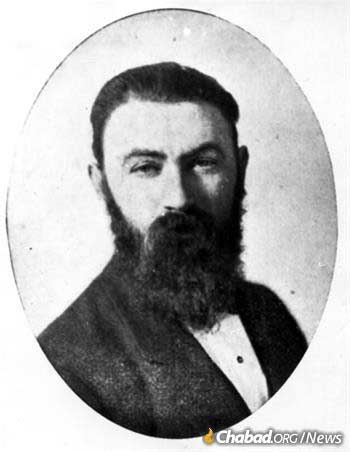
Bio of Chassid who Saved 1000’s, now in English
by Chabad.org
Sixty-one years ago—on the 20th of Elul, corresponding to Sept. 16, 1957—a former Jewish member of independent Latvia’s parliament, the Saeima, passed away in anonymity while imprisoned in a psychiatric hospital in the Soviet Union. His name was Mordechai Dubin, and he had once been a leading figure in pre-war Europe who famously used his considerable political influence for the benefit of Jews in need of assistance. Now, appearing for the first time in English, Chabad.org has translated and published the extensive firsthand memoirs of Dubin’s secretary, Avraham Godin, allowing English-readers a previously unseen view into Dubin’s life and work.
“Soviet-Era Statesman, Chassid and Martyr: Mordechai Dubin” includes an introduction and five chapters offering historical background and detailing Dubin’s work in inter-war Latvia, his battle against Soviet authorities, and his leadership at the onset of World War II. The work, translated and extensively annotated by Chabad.org associate editor Dovid Margolin, also includes Godin’s own memories about the 15 years he spent in Soviet Gulags.
Dubin was already a known European Jewish community leader in 1927, when the rest of the Jewish world learned his name. At that time, following the arrest and subsequent release from Soviet imprisonment of the sixth Rebbe—Rabbi Yosef Yitzchak Schneersohn, of righteous memory—Dubin played a pivotal role in convincing the Bolsheviks to grant exit visas for Rabbi Yosef Yitzchak and his family, and permission for the Rebbe to take his extensive library with him. To accomplish this, Dubin leveraged his support for the Latvia-Soviet Trade Agreement then being debated on the floor of Latvia’s parliament, making it clear to the Russians he would vote against the much-desired deal if they did not fulfill his demands.
Rabbi Yosef Yitzchak was allowed to leave, and settled in Riga, Latvia’s capital, becoming a citizen in the early 1930s. When the Rebbe and his family found themselves in Nazi-occupied Poland in 1939, Dubin again worked all of his connections to rescue the Rebbe, managing to arrange for them to be extricated from Warsaw and brought to Riga via Berlin.
While perhaps the most famous example of the Chabad Chassid’s work, it is far from the only one. In a public career that began roughly at the time of Latvia’s independence in 1919 and lasted until his arrest by the Soviets in 1941, Dubin helped thousands of Jewish refugees travel through or settle in Latvia, including Russian-Jews heading west to escape the Soviet Union, and later, Jews heading east fleeing Hitler’s Germany. Although he was the leader of the traditional Orthodox Agudath Israel (Agudas Yisroel) political party in Latvia, the help he extended to one and all went far beyond his own constituency, endearing him to his political allies and opponents alike.
Dubin was arrested when the Russians invaded Latvia following the Nazi-Soviet Nonaggression Pact, and languished in and out of Soviet imprisonment until his passing in 1957, which was hastened no doubt by the cruelties he faced in Stalin’s prison system, part of which was forced psychiatric treatment. Dubin’s family was killed by the Nazis.
Avraham Godin served as Dubin’s secretary from 1928-1941 and his memoirs are an important record of pre-war Jewish life in Latvia, as well as a firsthand account of the methods and impact of a devoted Jewish leader. Godin himself was arrested a short while after his employer, and served 15 years in the Gulags before finally being allowed to leave for Israel in 1969. He passed away in 2001.
Godin wrote about Dubin in many languages over the years. This newly published memoir, translated with permission from Shamir Publishing House, is based on his Russian-language writing and with the addition of lengthy footnotes and additional background information.
















What a treasure
Will our high schools be teaching this? This (man and book) is a real national treasure and needs to be studied.
Thanks for publishing it in English
interested
where can one buy this book?
Milhouse
For decades he was assumed to have been killed by the nazis, and Chabad publications repeatedly stated this. Only after the USSR fell was it discovered that they had arrested him and that he’d spent 16 years in their hands. It’s hard to say this, but he’d probably have been better off falling into the nazis’ hands. At least they’d have sent him to Gan Eden immediately.
best mashpia
what is the name of the bio?